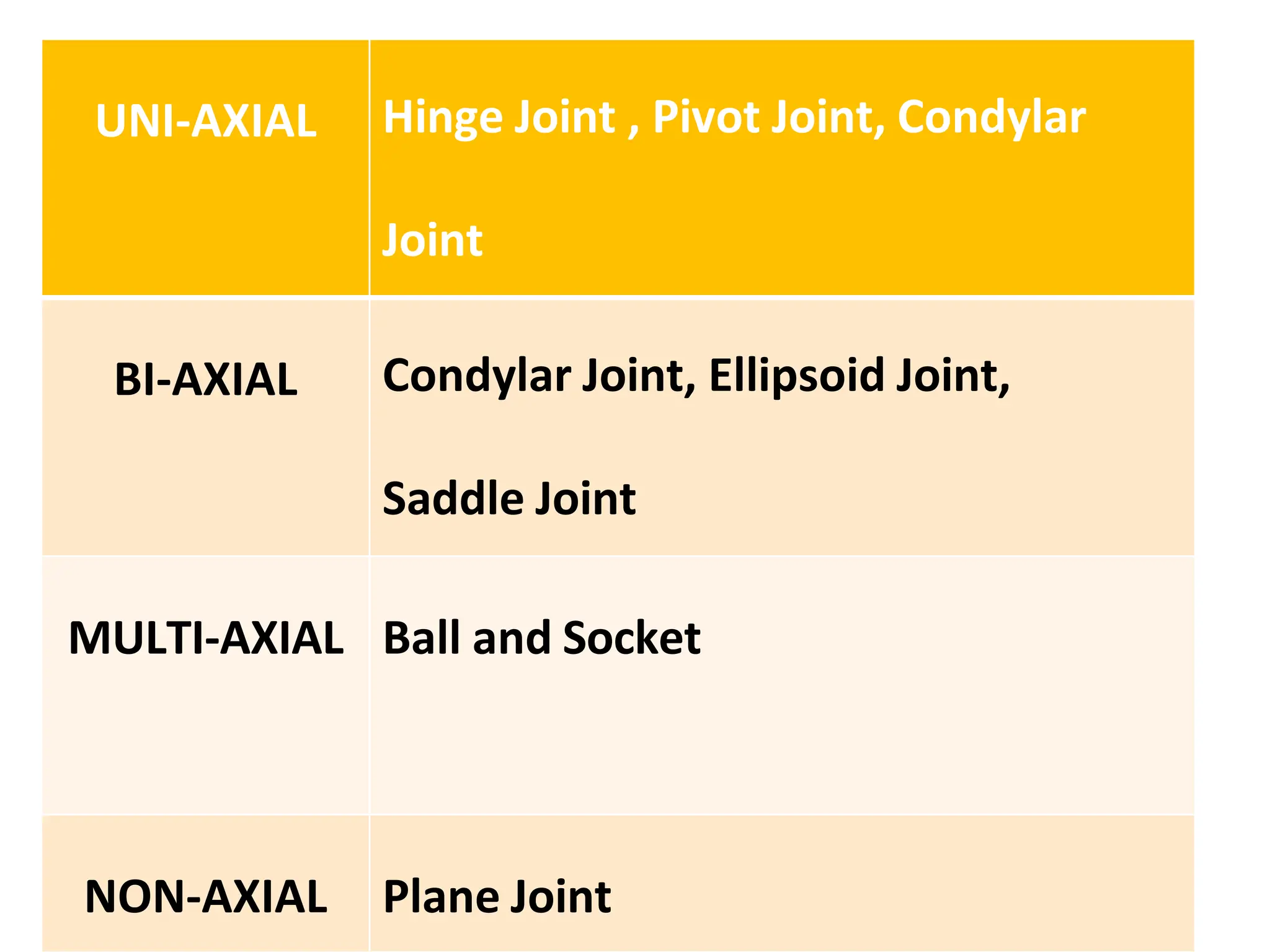Joints are where two or more bones meet, and can be classified based on their structure and movement. There are three main types of joints: immovable fibrous joints, slightly movable cartilaginous joints, and movable synovial joints. Synovial joints have articular cartilage, a joint cavity filled with synovial fluid, and a fibrous joint capsule that allows movement like flexion, extension, and rotation. Examples are ball-and-socket joints like the shoulder and hip, and hinge joints like the knee. Joints are important for movement, growth, and transmitting forces between bones.

































































